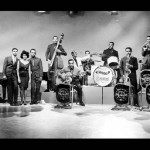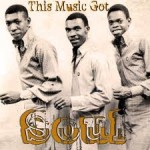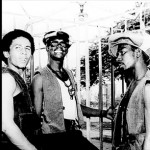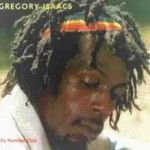By Roy Black
Jamaica gave to the world some six to seven different genres of music, more than any other country, with perhaps the United States being the only exception.
It is nothing short of amazing when one considers Jamaica’s size compared to much larger countries. Nearby, Trinidad has calypso, The Dominican Republic has meringue, Cuba has the cha cha, and Panama, the mambo. But unlike Jamaica, there is hardly any other genre of music in these countries or others that could be ranked alongside the established ones, or which have impacted the international music scene the way that the Jamaican genres did. Jamaica gave the world Mento, Ska,Rocksteady, Reggae, Dancehall, Dub and Lovers Rock.
Mento or Mento-Calypso, as it was sometimes referred to, was Jamaica’s first commercially recorded music and the island’s most indigenous music form. Mento bands provided music for dances, parties and receptions during the late 1940’s and early 1950’s, as there were no sound systems or discotheques at the time.

When recordings were later done, there appeared on the scene local stars like Harold Richardson and the Ticklers with Healing in The Balmyard; Count Lasher with The Talking Parrot; The Chins Calypso Sextet with Night Food; and Dry Weather House with Hubert Porter.
But the man who really gave Jamaica’s mento-calypso to the world was Norman Byfield, better known as Lord Flea.
Born in west Kingston in the early 1930’s, Flea was an exciting guitarist and a clever tongue-in-cheek exponent of rhythmic rhyme who helped to start the calypso craze in the United States. He first performed locally with his band, The Calypsonians, and did a few recordings, before being contracted by an American club owner who was searching for local talent to work at his Florida venue.
Flea took full advantage of the opportunity and created new house records with his band. His calypso firestorm in the US was extended into the movies in 1957 when he appeared in Calypso Joe and Bop Girl Goes Calypso, which established him as Jamaica’s first international superstar ahead of Bob Marley, Jimmy Cliff, Desmond Dekker and others. The album, Swinging Calypso, done for the larger-than-life recording entity, Capitol Records a year later, is still a collector’s item.

By 1955, mento was losing ground as the American R&B and boogie began to be played on small sound systems in Jamaica. Skully and Bunny were among the first set of Jamaican artists to record imitation-style R&B and boogie. Ska which had elements of these two genres, gradually emerged between 1961 and 1962 and became Jamaica’s foundation music and the heartbeat of the nation at Independence.
Ska was first given to the world through the United Kingdom gateway, courtesy of Laurel Aitken, who did recordings there from as early as 1960, and the subsequent mass migration of Jamaican artists to those shores in the early 1960’s. A contract with the UK-based Melodisc record created the Blue Beat label that saw the distribution of Jamaican ska throughout Europe and later America. Millie Small’s My Boy Lollipop was crucial to this thrust.

The rocksteady beat, being somewhat of a slower version of ska, didn’t have much difficulty in catching on in the UK. Labels like Trojan, Doctor Bird and Bullet benefited immensely through the distribution of Jamaican rocksteady recordings in Europe. The Duke Reid-produced 1967 Rocksteady recording, It’s Raining, by the 3 Tops, was one of the first Jamaican releases by Trojan. Several other of Reid’s recordings were issued on the label.
Desmond Dekker and the Aces gave the world some of the earliest and best rocksteady numbers in the form of (007) Shanty Town, A It Mek and Pickney Gal. (007) Shanty Town – a 1967 James Bond movie-inspired song, presaged Dekker’s emergence as an internationally famous recording artiste by becoming the first Jamaican-produced record to reach the top 20 of the British charts.

Its chilling lyrics tell the tale of the emergence of crime in Jamaica, particularly the ghetto areas:
“007 at Ocean 11
And now rude boys a go wail
Cause them out of jail
Rude boys cannot fail
Dem a loot, dem a shoot, dem a wail
A Shanty town.”
There were countless other rocksteady recordings that impacted the international music scene.
Although Bob Marley is widely accepted as the artist most responsible for spreading reggae music internationally, it was Dekker who first made the world accept reggae music as an international music phenomenon with the recording Israelites in 1969.

It was the first Jamaican recording to occupy the number one position on the British charts and the first to reach the top 10 of the US, charts.
Several other Jamaican artists like Toots and the Maytals, Peter Tosh, Black Uhuru and The Pioneers, who ply their wares abroad, helped to spread the genre, so much so, that it is now considered the most popular genre in the world.
It is fair to say that Jamaica gave the world the current internationally famous deejay rapping phenomenon that had its foundation in Jamaica’s Dub music, which saw the dropping out of the vocal and rhythm tracts and the retention of mainly the drum and bass to create a new sound called dub. The spaces created by the vocal track’s absence enabled people like U-Roy to interject sizzling, jive-saturated lyrics that sent dancehall fans into a frenzy. The phenomenon gradually spread to distant shores.

After some pioneering work by Sugar Minott in the mid1970’s, dancehall music came on stream proper in 1983 with Yellowman, Josey Wales, Charlie Chaplin and Brigadier Jerry headlining a cast of new deejays that took the genre to unprecedented levels. Others like Bounty Killer, Buju Banton, Ninjaman, Shabba Ranks and Beenie Man consolidated dancehall’s position as a popular music form outside of Jamaica. Lovers rock, a reggae subgenre noted for its romantic and soul content, appeared in the early days of reggae with Jamaican and American singers like Ken Boothe, Johnny Nash, John Holt and Gregory Isaacs.

Isaacs’ My Only Lover, is credited as the first lovers rock record ever made, while others give the credit to the London-born Louisa Mark’s Caught You In A Lie in 1975. Lovers rock attracted a huge following mainly in the UK and Jamaica.



You must log in to post a comment.